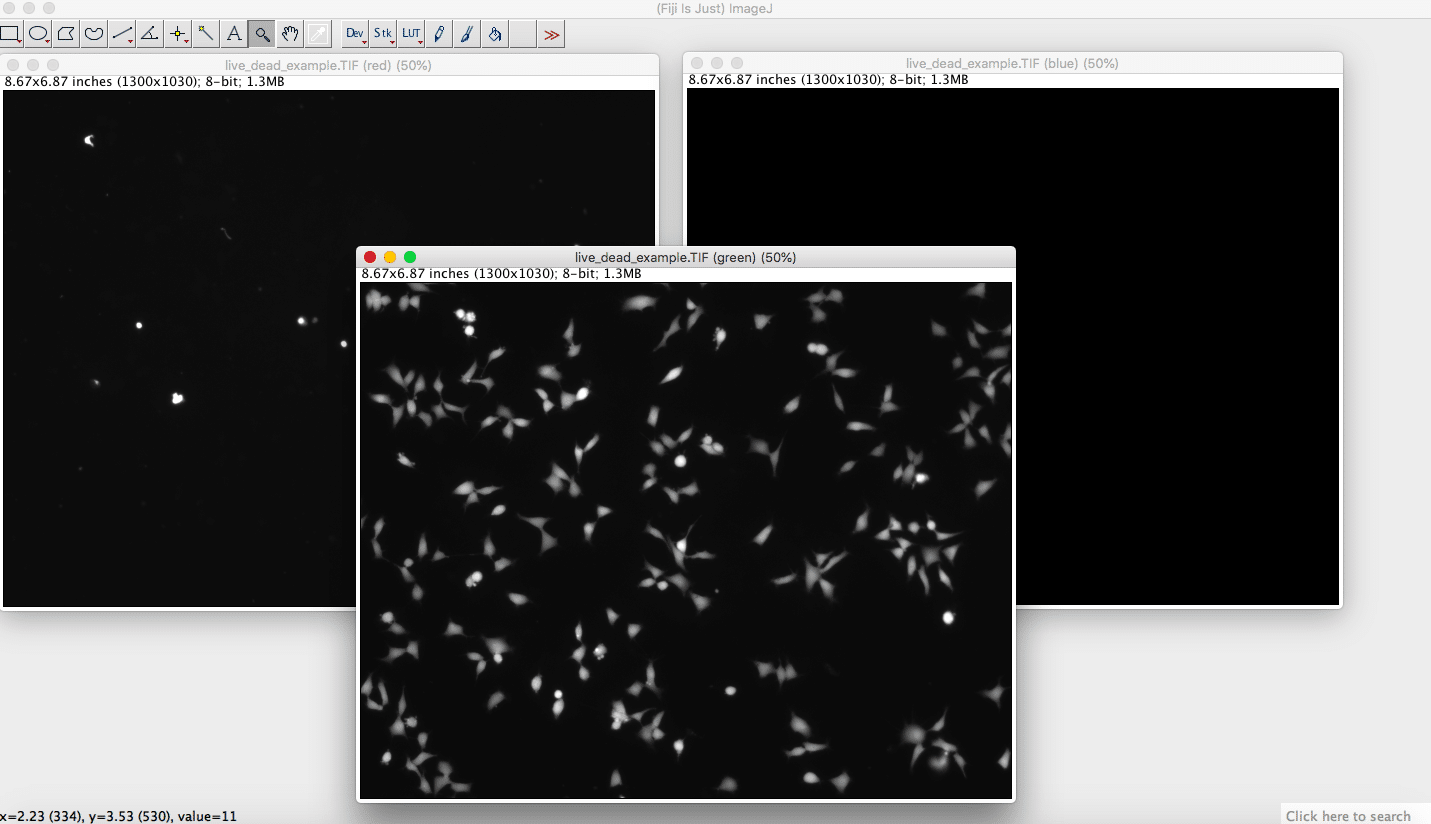
IntroductionĬell polarization is a prerequisite for virtually every specialized cellular process. Microtubules are already a target for cancer therapy, so future work could help to optimize the use of existing drugs.
#IMAGEJ SOFTWARE CELL STAINING HOW TO#
Tumors need a good blood supply to grow, so understanding how to block blood vessel formation could lead to new treatments.

Further work could have an impact on human health, not least in cancer research. Taken together, these findings change our understanding of how microtubules affect cell movement and how important the centrosome is for this process. Lastly, depleting CAMSAP2 also prevented the normal formation of blood vessels in zebrafish embryos. Without CAMSAP2, the cells could not organize their microtubules and they were unable to elongate in one direction and form stable sprouts. When the same blood vessel cells from human umbilical cords are grown as spheres inside collagen gels, they form sprouts as they would in the body. Normally, the cells on either side move in a straight line using their microtubules, and though the process was not affected in cells without centrosomes, it was in those without CAMSAP2.Įven more striking results were seen in three-dimensional assays. In a two-dimensional wound-healing assay, a sheet of cells originally grown from the vessels of a human umbilical cord was scratched, and a microscope was then used to record the cell’s movement as they repaired the injury. Analysis of cell shape and movement in cells grown in the laboratory and in living animals revealed that cells cannot become asymmetrical, or “polarize”, and migrate without CAMSAP2. now report that removing the cells’ centrosomes did not affect cell migration, but getting rid of CAMSAP2 did. Yet, many microtubules organize without it these microtubules instead are organized by a compartment of the cell called the Golgi apparatus and are stabilized by a protein named CAMSAP2. Microtubules can anchor to the centrosome, and this structure is thought to play an important role in cell migration. The centrosome was generally believed to act like a compass, pointing in the direction that the cell will move. Destroying microtubules damages blood vessel formation, but their exact role remains unclear.Ī structure called the centrosome can organize microtubules within cells. The scaffolding includes tube-like fibers called microtubules that extend towards the cell membrane and organize the inside of the cell. These “endothelial cells” start the process by reorganizing themselves to face the direction of the new sprout, changing shape to become asymmetrical, and then they begin to migrate.īeneath the surface, a network of protein scaffolding supports each migrating cell. The cells responsible are the same cells that line the finished vessels.

Sprouts appear on existing vessels, stretching out to form new branches in a process called angiogenesis. Networks of blood vessels grow like trees.

We propose that CAMSAP2-protected non-centrosomal microtubules are needed for establishing cell asymmetry by enabling microtubule enrichment in a single-cell protrusion. In the absence of CAMSAP2, cell polarization in 3D could be partly rescued by centrosome depletion, indicating that in these conditions the centrosome inhibited cell polarity.

CAMSAP2 was also important for persistent endothelial cell sprouting during in vivo zebrafish vessel development. In contrast, non-centrosomal microtubules stabilized by the microtubule minus-end-binding protein CAMSAP2 were required for directional migration on 2D substrates and for the establishment of polarized cell morphology in soft 3D matrices. Here, we show that centrosome loss had no effect on the ability of endothelial cells to polarize and move in 2D and 3D environments. In cells with a radial microtubule system, a pivotal role in setting up asymmetry is attributed to the relative positioning of the centrosome and the nucleus. Microtubules control different aspects of cell polarization.


 0 kommentar(er)
0 kommentar(er)
